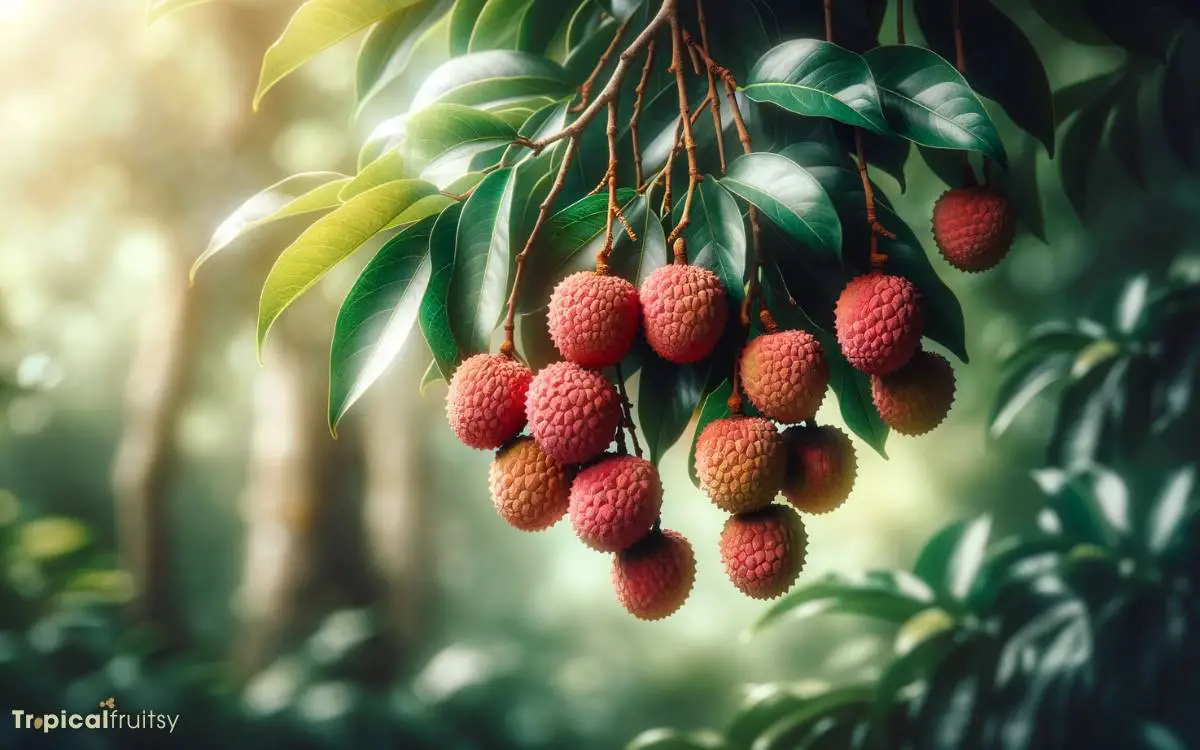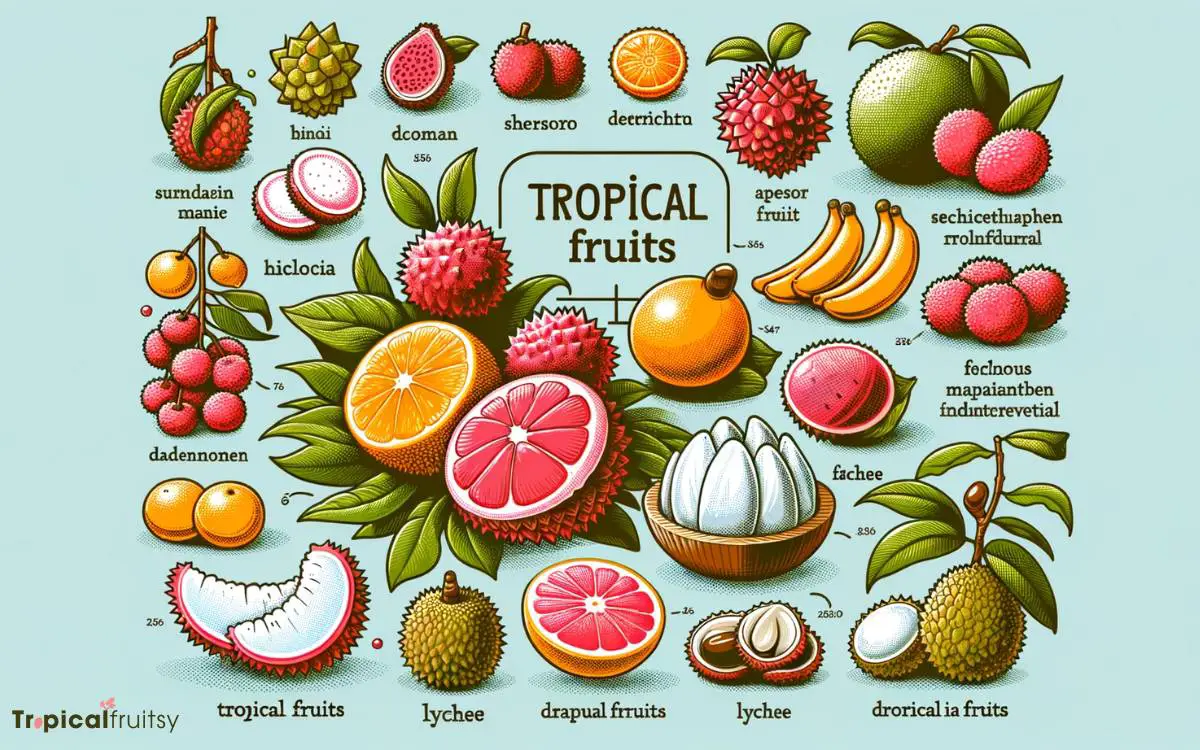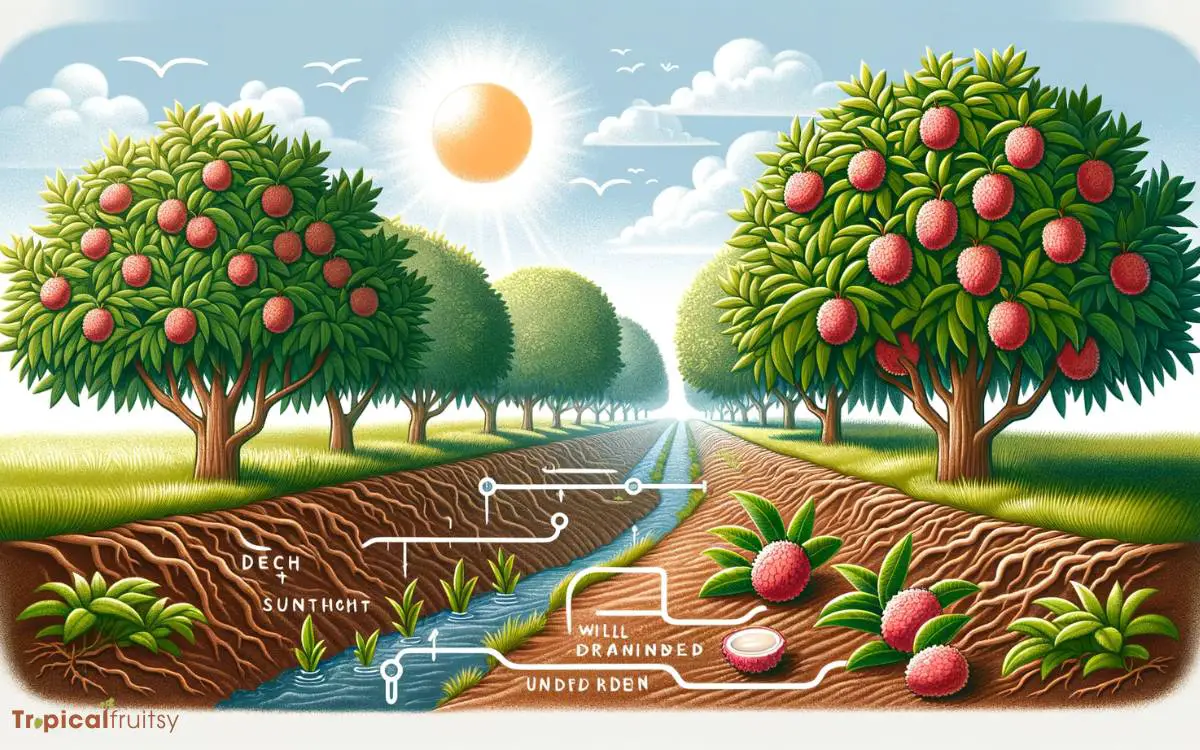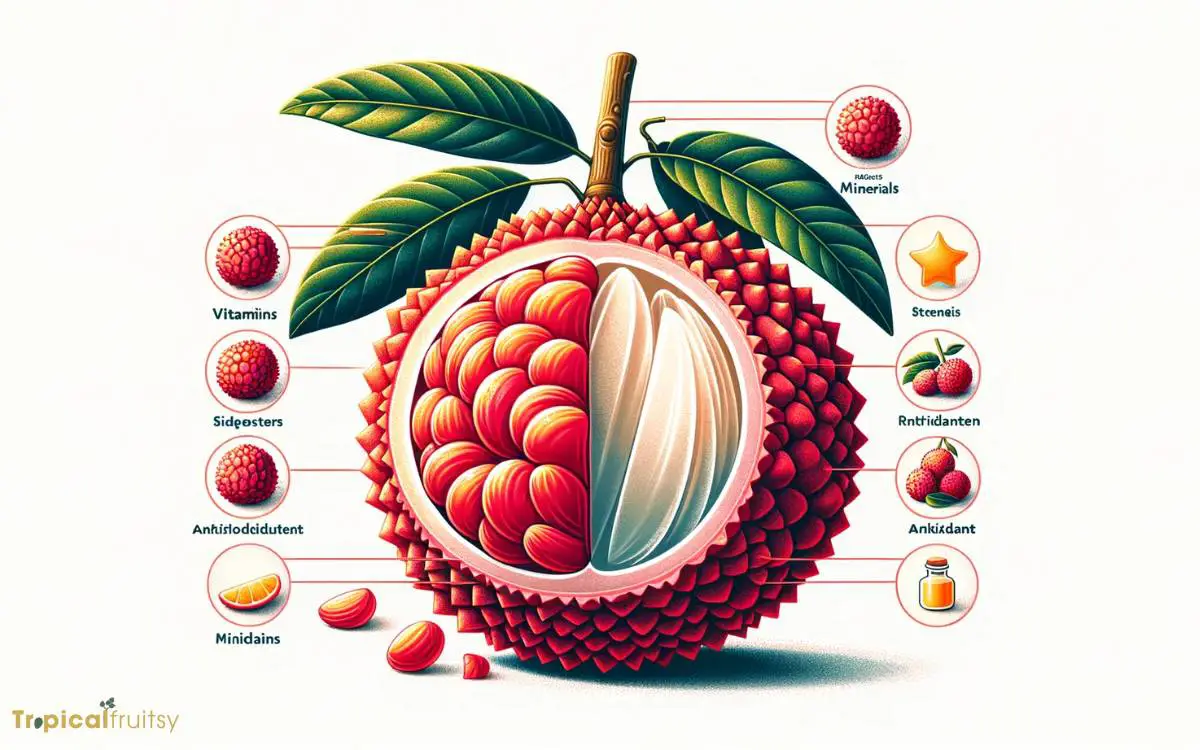Is Lychee a Tropical Fruit? Explore!
Lychee, known by its scientific name Litchi chinensis, is categorized as a tropical fruit. This sweet and aromatic fruit is native to the subtropical region of China and flourishes in the warm, humid climates typical of tropical areas.
Lychee trees have a strong preference for tropical environments, as they are not frost-tolerant and require specific conditions to bear the juicy and vitamin C-rich fruits they are known for.
The lychee’s cultivation has spread from its origins in China to other parts of the world with similar climates, including Southeast Asia, India, and certain regions of the Americas and Africa.
Here are some key points about lychee:
Relished for its unique taste, the lychee remains a symbol of tropical fruit richness and nutritional bounty.

Key Takeaway
6 Attribute: Is Lychee a Tropical Fruit
| Attribute | Description |
|---|---|
| Scientific Name | Litchi chinensis |
| Origin | Subtropical China |
| Preferred Climate | Warm, humid (tropical/subtropical) |
| Frost Tolerance | Sensitive to frost |
| Cultivation Regions | Southeast Asia, India, parts of the Americas and Africa |
| Nutritional Highlight | High in vitamin C |
Lychee’s Botanical Origins

The lychee, scientifically known as Litchi chinensis, hails from the subtropical regions of Southern China and has been cultivated there for over 2,000 years.
This evergreen tree belongs to the family Sapindaceae, which includes other well-known fruits such as longan and rambutan.
Lychees thrive in warm, humid climates with distinct seasonal variations, which promote the annual fruiting cycle.
They require well-drained, slightly acidic soil for optimal growth. The plant’s propagation is predominantly through air layering or grafting, ensuring genetic fidelity of the cultivars.
Its inflorescences produce small, unisexual flowers, leading to the development of the characteristic fleshy, aromatic fruit with a rough, leathery skin encasing a translucent, edible aril and a single, large seed.
Defining Tropical Fruits

Before classifying lychee in the context of tropical fruits, it is essential to understand that tropical fruits originate from regions within and adjacent to the equatorial zone, where environmental conditions are characterized by year-round warmth and ample rainfall.
These fruits generally share several distinct horticultural characteristics:
Climatic Adaptations:
- High humidity tolerance
- Temperature resilience
- Prolonged sunlight exposure compatibility
Morphological Features:
- Vivid coloration for attracting pollinators
- Fleshy and often juicy texture
- Varied seed dispersal mechanisms
Ecological Roles:
- Integral to local food chains
- Support for biodiversity
- Cultural and economic significance in their native regions
Understanding these traits helps in discerning whether lychee fits the category, which leads to the inquiry into the ideal growing conditions for lychee.
Ideal Growing Conditions for Lychee

Lychee thrives in a specific range of tropical climates where temperatures seldom drop below freezing and annual rainfall is abundant, typically exceeding 1,000 millimeters.
Optimal growth is achieved in areas with a distinct dry and wet season, promoting proper flowering and fruiting cycles.
Soil conditions conducive to lychee cultivation are well-drained, slightly acidic to neutral loams, rich in organic matter.
These trees require full sun and benefit from shelter against strong winds. While lychees can tolerate short periods of drought, they demand consistent moisture during the critical stages of growth and fruit development.
A balance of these environmental factors is crucial for the successful production of quality lychee fruits.
This delicate balance has influenced lychee’s global cultivation patterns, as will be discussed next.
Lychee’s Global Cultivation

Global cultivation of lychee primarily occurs in warm, frost-free regions that mirror the fruit’s native subtropical habitat.
The ideal conditions for lychee cultivation necessitate not only specific temperature ranges but also particular soil types and irrigation practices.
The subtropical climate, characterized by hot summers and mild winters, is essential for the development of the fruit, as lychee trees are sensitive to frost.
Key Regions for Lychee Cultivation:
- China: The leading producer, with ideal growing areas in the provinces of Guangdong, Fujian, and Yunnan.
- India: Major production in Bihar, which hosts the famous ‘Muzaffarpur’ variety.
- Southeast Asia: Thailand, Vietnam, and the Philippines are significant contributors, leveraging their tropical climates.
Expert cultivators continually assess soil fertility, ensuring it is rich in organic matter and well-draining, to sustain healthy lychee growth.
Nutritional Profile and Benefits

The nutritional profile of lychee includes a rich array of vitamins and minerals, contributing to its numerous health benefits.
Each luscious fruit is laden with vitamin C, essential for immune system function and skin health, providing more than 100% of the daily requirement in a single serving.
Lychees also contain a good amount of copper and potassium, which are integral for red blood cell formation and cardiovascular health, respectively.
The presence of B-complex vitamins like niacin, riboflavin, and folate aids in metabolic processes and energy production.
Additionally, lychee is a source of polyphenolic compounds and flavonoids, such as rutin and epicatechin, which possess antioxidant properties, combating oxidative stress and bolstering the body’s defense against various diseases.
Conclusion
In the realm of horticulture, the lychee stands as a symbol of tropical abundance, akin to a botanical treasure nestled within its rough, reddish rind.
Its cultivation across warm, humid landscapes echoes the intricate dance of climate and care essential to yield the delicate, fragrant fruits.
Rich in nutrients and steeped in cultural significance, the lychee embodies the lush generosity of the tropics, offering a succulent reward to those who understand and respect its intricate agricultural tapestry.






